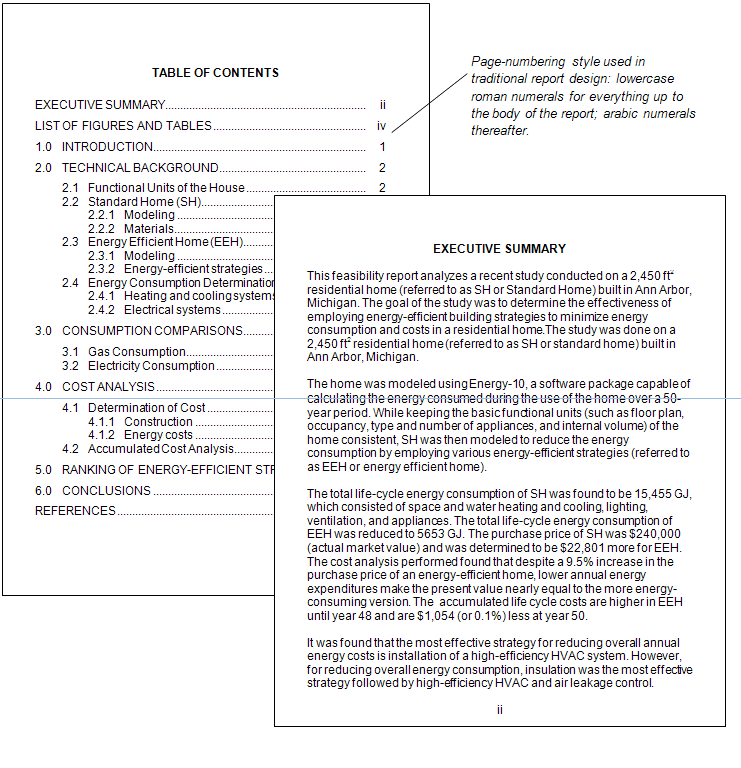46 10.4 Table of contents
You are familiar with tables of contents (TOC) but may never have stopped to look at their design. The TOC shows readers what topics are covered in the report, how those topics are discussed (the subtopics), and on which page numbers those sections and subsections start.
In creating a TOC, you have a number of design decisions:
- Levels of headings to include. In longer reports, consider not including only the top two levels of headings. This keeps the TOC from becoming long and unwieldy. The TOC should provide an at-a-glance way of finding information in the report quickly.
- Indentation, spacing, and capitalization. Notice in the illustration below that items in each of the three levels of headings are aligned with each other. Although you can’t see it in the illustration, page numbers are right-aligned with each other. Notice also the capitalization: Main chapters or sections are all caps; first-level headings use initial caps on each main word; lower-level sections use initial caps on the first word only.
- Vertical spacing. Notice that the first-level sections have extra space above and below, which increases readability.
Using the automatic TOC creator in your word processor can help you produce a clean, professional document. If you prefer to make your own, learn to use dot leader tabs in order to line up the page numbers correctly.
One final note: Make sure the words in the TOC are the same as they are in the text. As you write and revise, you might change some of the headings—don’t forget to change the TOC accordingly. See the example of a table of contents:

Chapter Attribution Information
This chapter was derived by Annemarie Hamlin, Chris Rubio, and Michele DeSilva, Central Oregon Community College, from Online Technical Writing by David McMurrey – CC: BY 4.0

